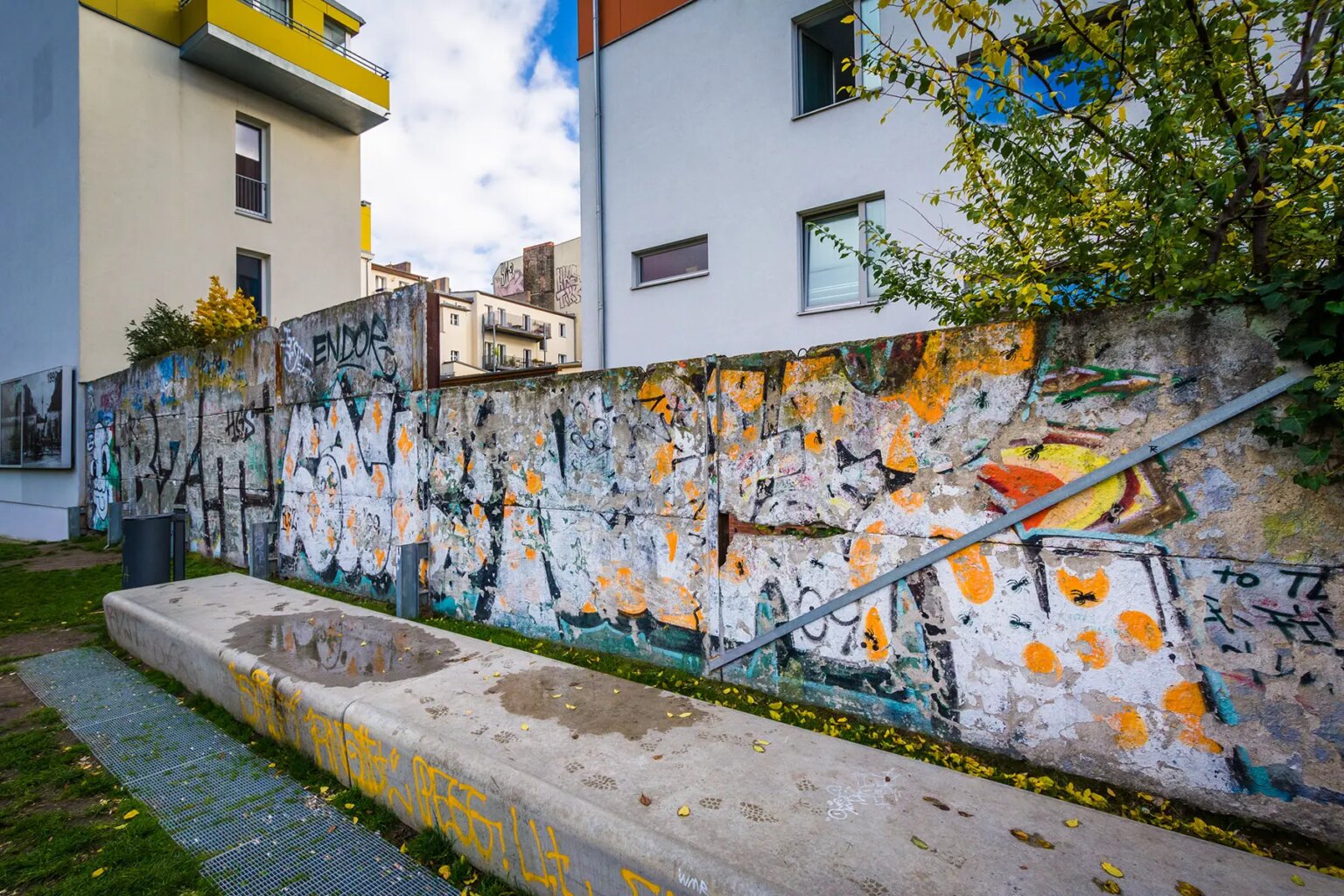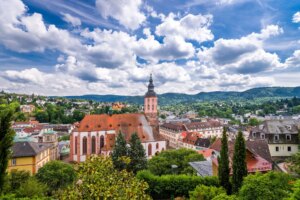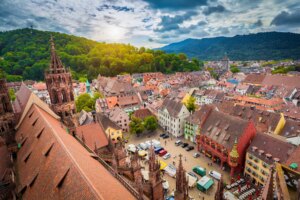Berlin boasts numerous historical attractions, museums, galleries, and parks that bring millions of tourists to the city each year. But for those who appreciate the quirky side of life, there are plenty of unique things to do in Berlin. From abandoned theme parks and underground supper clubs to public karaoke sessions and naked saunas, the opportunities are endless. So whether you’re planning a mainstream city tour or looking for something out of the ordinary, check out these fun activities.
- 1. Visit Berlin’s historic sites by bike
- 2. Walk along the Berlin Wall
- 3. Trace Berlin’s Jewish history
- 4. Get your culture fix on Museum Island
- 5. Get lost in the world of art
- 6. Take a dip in the Badeschiff
- 7. Browse one of Berlin’s epic markets
- 8. Visit the abandoned Spreepark amusement park
- 9. Dine at an underground supper club
- 10. Take an underground tour of Berlin
Allianz Travel
If you’re planning to travel, make sure you’re covered for costs of cancellation and other interruptions with Allianz Travel. They offer a range of products, including travel insurance, incoming health insurance, and rental vehicle insurance. With 24/7 emergency contact available, Allianz Travel are there wherever you need them.
1. Visit Berlin’s historic sites by bike
With so many sites to see in Berlin, exploring the city by bike is a great way to tick them off your list. There are many places to rent a bicycle in Berlin. Furthermore, the plethora of cycle lanes and cyclist road traffic signs make it a safe place to cycle. For the ultimate bike tour, start at the Reichstag; home of the Federal German Parliament. Once there, take a lift up to the roof terrace and glass dome to enjoy fantastic views across Berlin. Just make sure you book a time slot ahead of time as this is very popular.
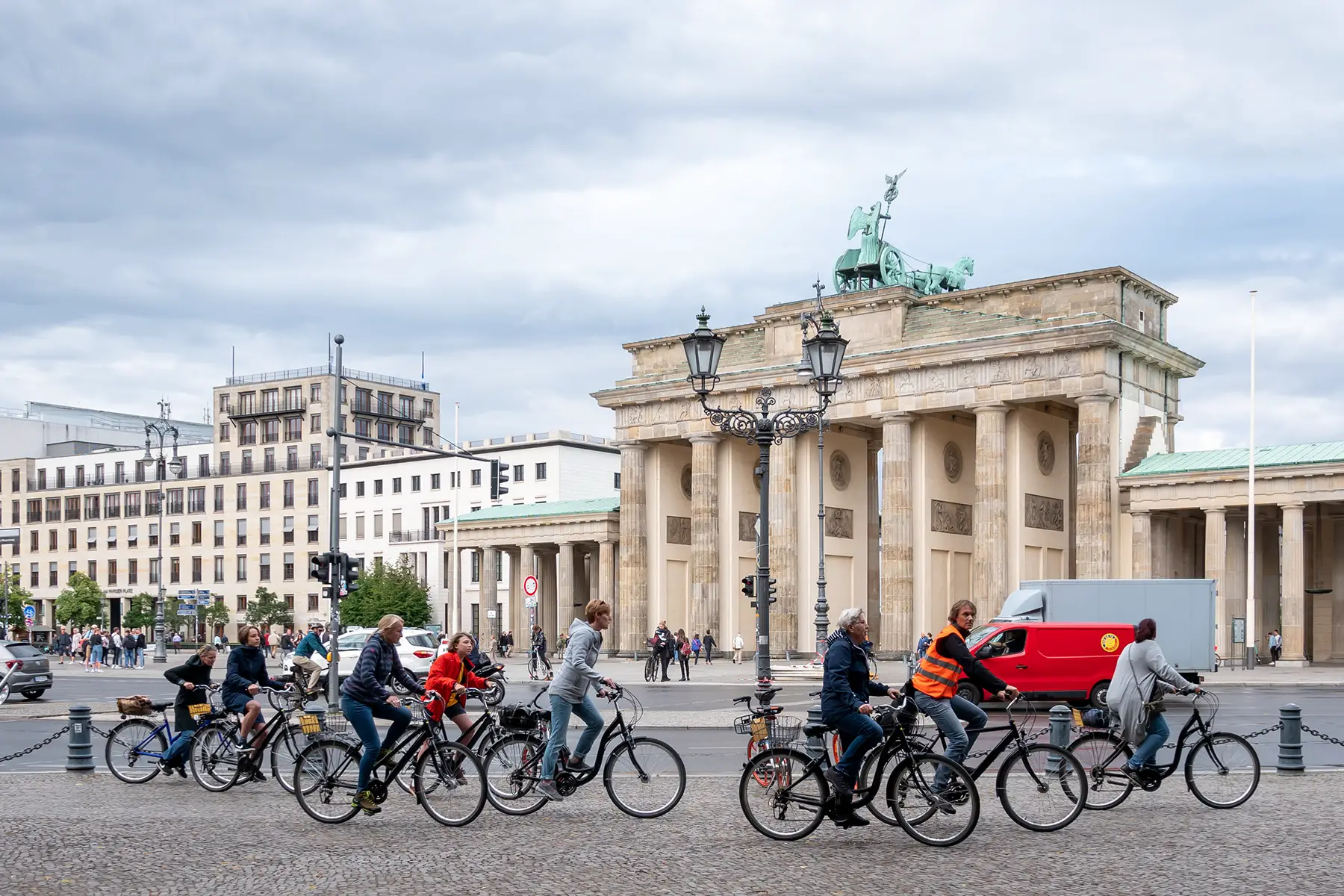
After that, head across the spectacular Tiergarten Park and onto the Brandenburg Gate; the iconic gateway to Berlin which overlooks the Unter den Linden boulevard. Make your next stop Checkpoint Charlie, the famous crossing point between East and West Germany. From here, move on to the Topography of Terror. Built on the old headquarters of the Gestapo and SS, this is one of the most visited museums in Berlin and shares the chilling history of repression under the Nazis. Just a few blocks away, the German Spy Museum is worth a visit if you want to immerse yourself in the world of spies and secret agents.
2. Walk along the Berlin Wall
Erected in August 1961 and dismantled in November 1989, the Berlin Wall remains a powerful symbol of the Cold War. It was originally built to prevent people from escaping from East Berlin into West Berlin; during the period of immense tension between the Soviet Union and the United States. But when East Germany announced that their citizens could cross for the first time, thousands gathered with picks and hammers to bring it down.

Today, the East Side Gallery is the largest remaining section. Decorated with more than a hundred murals created by international artists in 1990, it serves as a powerful reminder of this milestone in history. The Berlin Wall Memorial, which stretches 1.4km along the former border strip on Bernauer Strasse, is one of Berlin’s most visited sites. Each year, more than a million people come to see the last pieces of the wall.
3. Trace Berlin’s Jewish history
The hairs on the back of your neck will likely stand up when you walk through the atmospheric Holocaust Memorial near Brandenburg Gate. The 2,711 concrete slabs of different heights represent the six million Jews murdered during World War II. The Memorial to the Murdered Jews of Europe is open every day and throughout the night. Meanwhile, the Jewish Museum in Kreuzberg centers on Jewish history, culture, and belief through a series of compelling exhibitions.
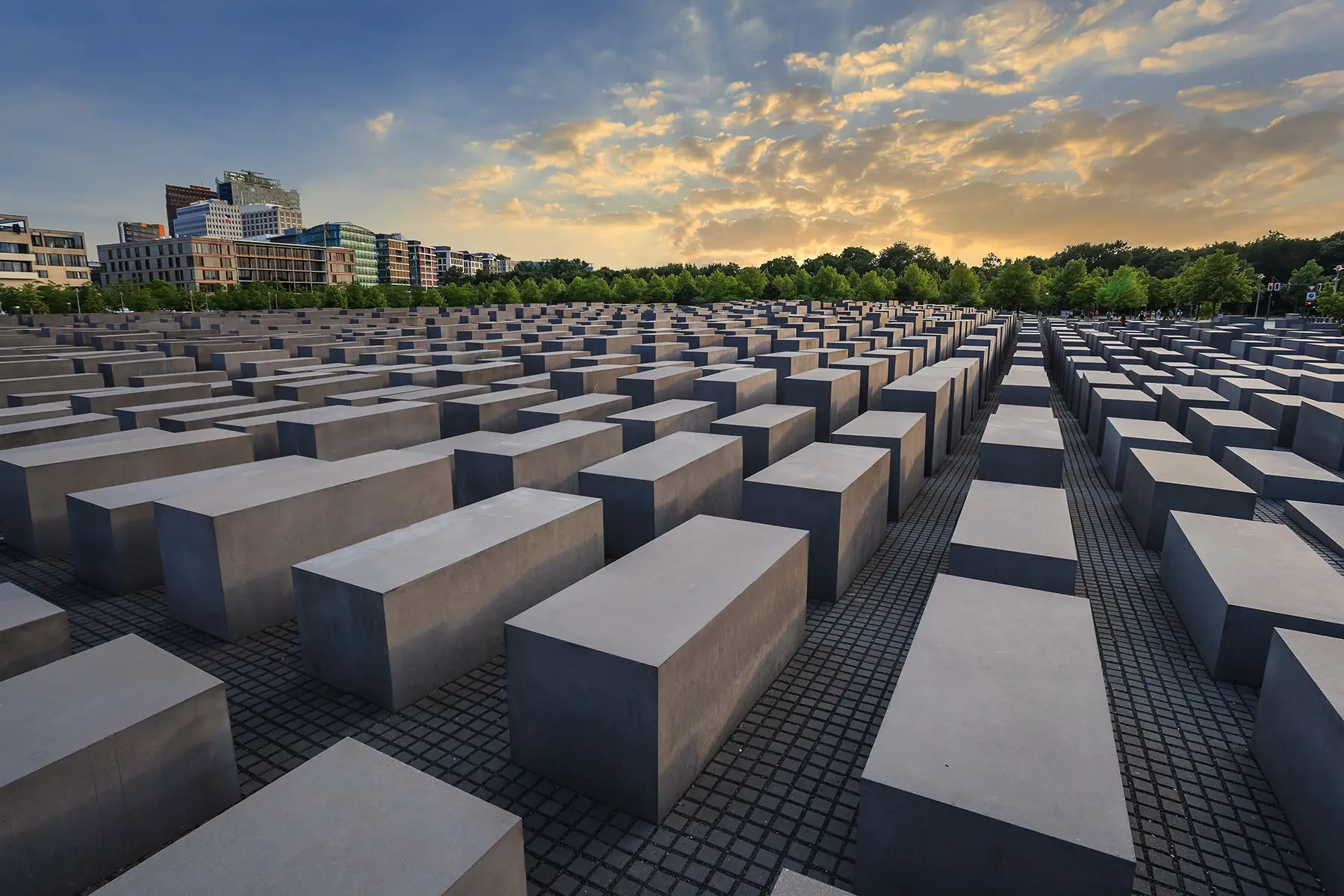
Just outside Berlin, the Sachsenhausen Memorial and Museum was one of the first concentration camps to open to the public after the war. More than 200,000 opponents of the Nazi regime and Jews were imprisoned in the camp between 1936 and 1945. A further 60,000 prisoners were held under the Soviets between 1945 and 1950. Today, guided public tours are given around the camp in several different languages.
4. Get your culture fix on Museum Island
If you love art and history, then a visit to Museum Island is an absolute must. Lying in the middle of the River Spree, the UNESCO World Heritage Site is home to five of Berlin’s most important museums. Arguably the most impressive of these is the Alte Nationalgalerie which houses around 1,800 paintings and 1,500 sculptures from Romantic and Impressionist eras. Meanwhile, the Altes Museum showcases stone sculptures, vases, craft objects, and jewelry spanning more than 350 years. The Bode-Museum is also home to a collection of sculptures, Byzantine art, coins, and medals.

If you’re fascinated by Egyptian history, you can see the stunningly beautiful Egyptian Queen Nefertiti head sculpture at Neues Museum. And don’t miss the archaeological wonders of the Pergamonmuseum. Here, you can explore full-scale reconstructions of architectural monuments from Greek and Roman antiquity. And if you’re keen to visit all the museums, consider spending €16 on a ticket that grants you access to them all.
5. Get lost in the world of art
With around 440 art galleries dotted around the city, Berlin is without a doubt an artistic hub. Among the most popular of these is the Berlinische Galerie which houses a collection of Berlin art from 1880 to 1980 in an old glass warehouse. If you prefer the Old Masters, however, make sure to check out the Gemäldegalerie. This is home to one of the world’s most important collections of European paintings from the 13th to the 18th centuries. Among its 3,000 paintings, you will find works by Rubens, Rembrandt, Titian, Bruegel, Caravaggio, and Vermeer.
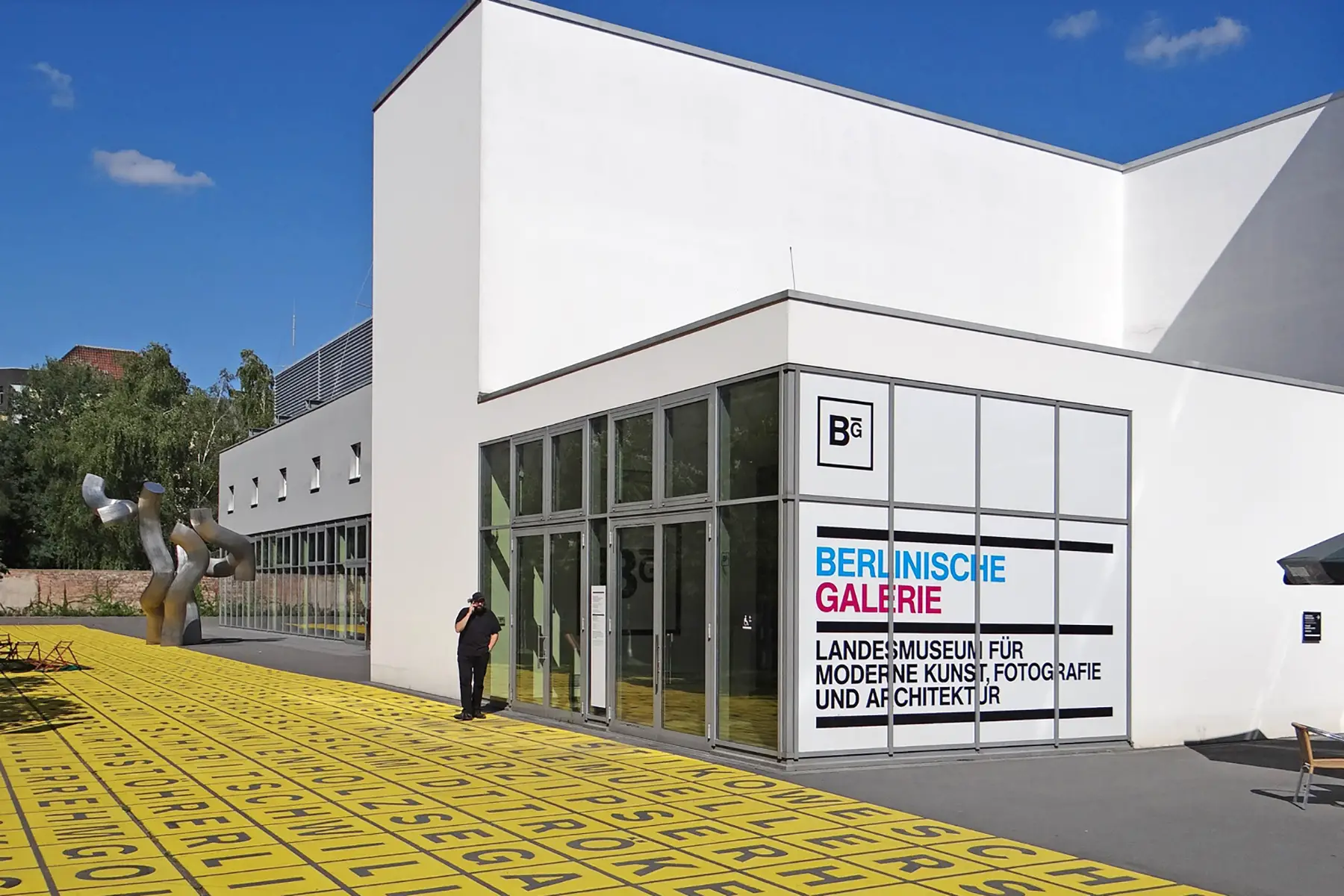
Contemporary art fans, on the other hand, will enjoy a visit to the Hamburger Bahnhof. Located in an old railway station, the museum contains one of the world’s largest collections, including Warhol’s Mao. Meanwhile, the Sammlung Boros boasts one of Berlin’s best private collections of contemporary art displayed in a Nazi bunker. Those passionate about photography can also discover the biggest names in the industry at C / O Berlin; housed inside a converted royal post office. And let’s not forget the incredible street art scattered on walls, doors, bridges, and roadsides throughout the city. If you time your visit carefully, you might also catch Gallery Weekend and Berlin Art Week; two major art events in Berlin’s calendar.
6. Take a dip in the Badeschiff
If you need to cool down, you can always take a dip in the Badeschiff (bathing ship). This is one of Berlin’s most unusual swimming pools and was originally conceived by local artist Susanne Lorenz as a contemporary solution to living in a polluted urban center. The quirky pool is made from an old river cargo container and floats atop Berlin’s long-neglected and unswimmable River Spree. In the summer, it is completely uncovered, creating a mini-oasis of clean, cool water that puts swimmers almost eye-level with the river. Many locals and tourists frequent the open-air bar and hang out on the wooden boardwalks while resident DJs spin the decks.
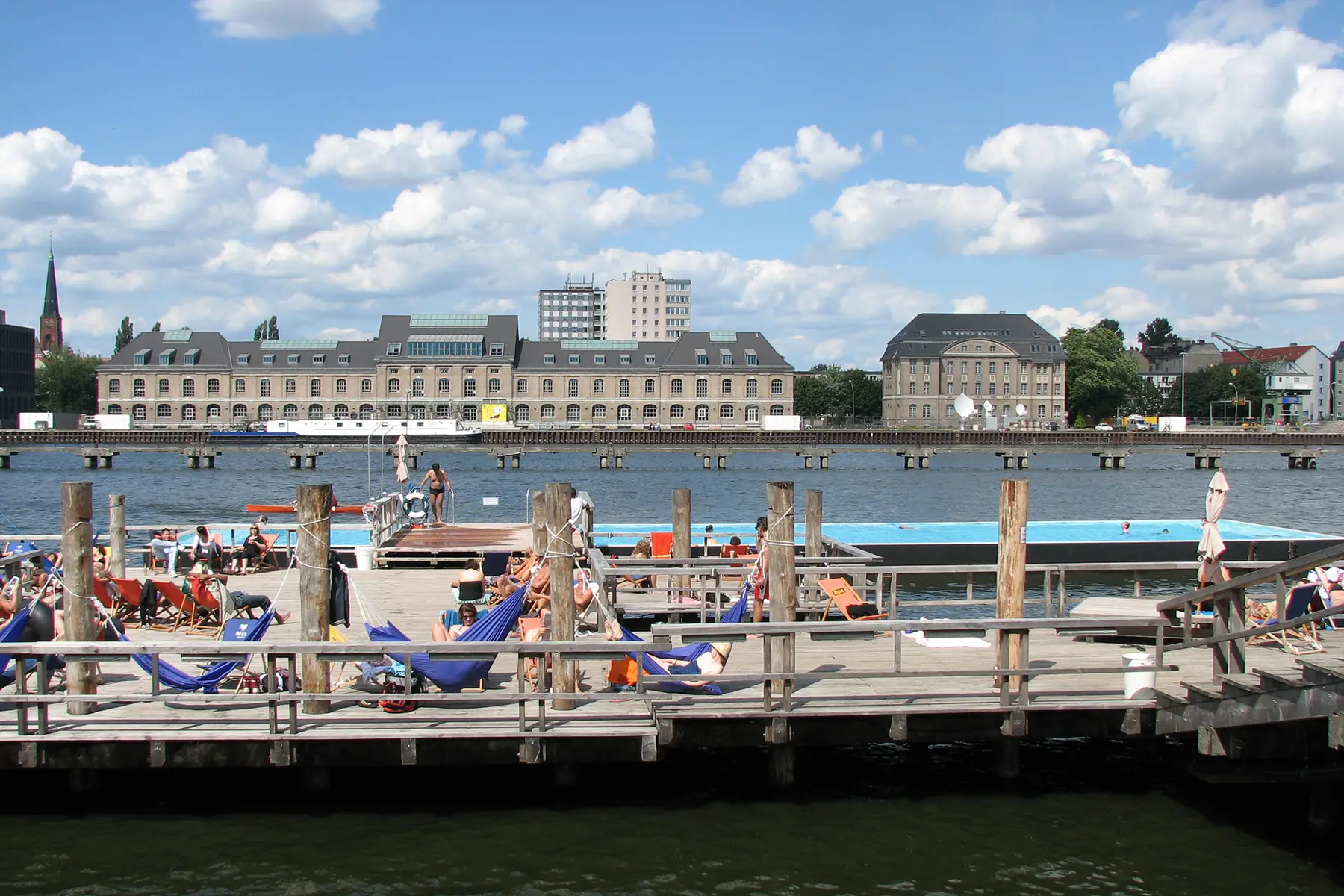
The peak of Badeschiff’s bizarreness, however, definitely emerges in the winter. During the colder months, the pool is turned into an indoor health complex covered by three translucent shells. Berliners can seek refuge from the cold in the Winter Badeschiff’s two saunas, lounging area with deck chairs, and heated pool. Brave souls can even duck under the pool’s hanging flaps and swim outside, catching a glimpse of the city skyline. But foreigners be warned: German sauna culture typically demands full nudity and the staff is pretty strict about this!
7. Browse one of Berlin’s epic markets
If you love to shop, you will no doubt love snagging a bargain or two at one of Berlins’ many markets. Whether you want to pick up some vintage clothing, feast on a delicious döner kebab, or catch some live music, you will find it all in this bustling city. If you’re looking for a fun-filled Sunday, Mauerpark is home to the king of flea markets. Here, you will discover all kinds of knick-knacks and numerous food trucks selling tasty German foods and snacks from all over the world. Public karaoke sessions are regularly held in the amphitheater providing even more entertainment for the crowds. Meanwhile, Neuköllner Flowmarkt brings second-hand art, vinyl, handmade goodies, and more to the Neukölln district. Be prepared for some serious bargaining, though, as Berliners love to haggle here.

If you’re feeling peckish, check out Markthalle Neun and pick up local produce such as meat, fresh vegetables, flowers, and craft beer from Germany. Alternatively, the Boxhagenar Platz food market, Arminiusmarkthalle, and the weekly Winterfeldtplatz farmer’s market sell all kinds of culinary delights. The Thai Food Market in Wilmersdorf, meanwhile, is a great place to enjoy a cheap meal. Here, families informally cook and sell homemade food in Preußenpark, behind the Fehrbelliner Platz station.
8. Visit the abandoned Spreepark amusement park
For a totally unique experience of Berlin, nothing beats a visit to the eerie setting of Spreepark. The run-down abandoned theme park is the place to see toppled dinosaur statues, a 14-meter, multicolored empty Ferris wheel, or de-railed go-carts sitting among weeds and underbrush. Originally opened as Kulturpark Plänterwald in 1969, the park once attracted 1.5 million visitors per year. Legendary performers from all over the Eastern Bloc, such as Nina Hagen, performed there.
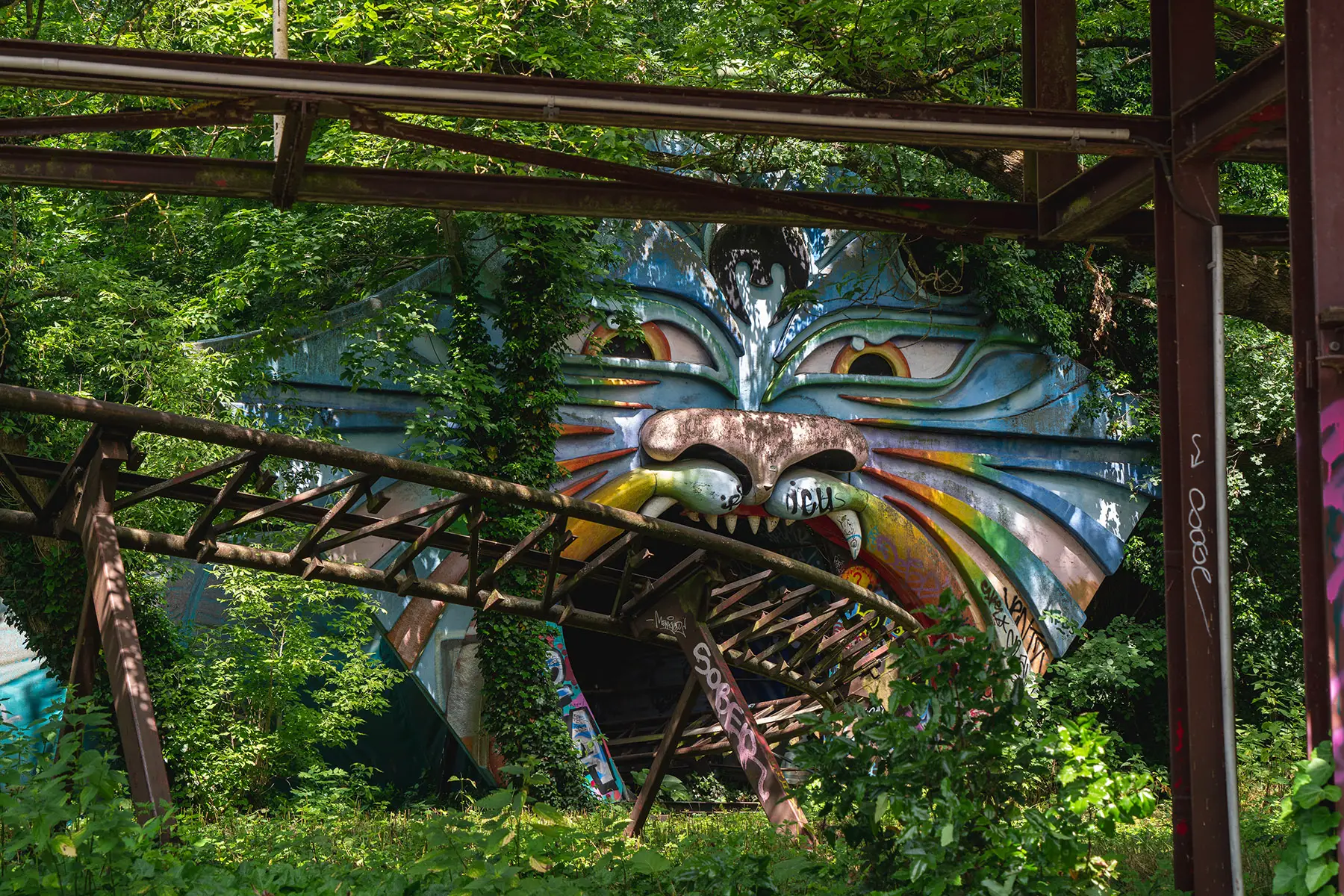
After reunification, however, the park’s fate became somewhat troubled. Under the ownership of Norbert Witte, it reopened as Spreepark in 1991. Over the next decade, Witte’s company gradually accumulated millions of dollars of debt. Eventually, in 2001, the company declared itself insolvent. Witte was subsequently arrested for trying to smuggle approximately US$14 million of cocaine from Peru to Germany in the masts of one of his ‘flying carpet’ rides! Today, the fate of the park is up in the air. And while rumors of a renovation continue to circulate, passersby can still enjoy the site’s magical oddities for free. Tours and events are occasionally held at the park, too. In the past, these have included a Planet of the Apes movie screening, Christmas markets, and a concert by British band The xx.
9. Dine at an underground supper club
There’s no shortage of amazing restaurants and bars in Berlin to explore. However, the city also has a thriving underground supper club scene. Similar to the speakeasy concept, these venues typically carry a reservation-only policy and are often hidden in private gardens, construction sites, and behind unmarked doors. In fact, trying to find the entrance is half the fun for adventurous foodies.
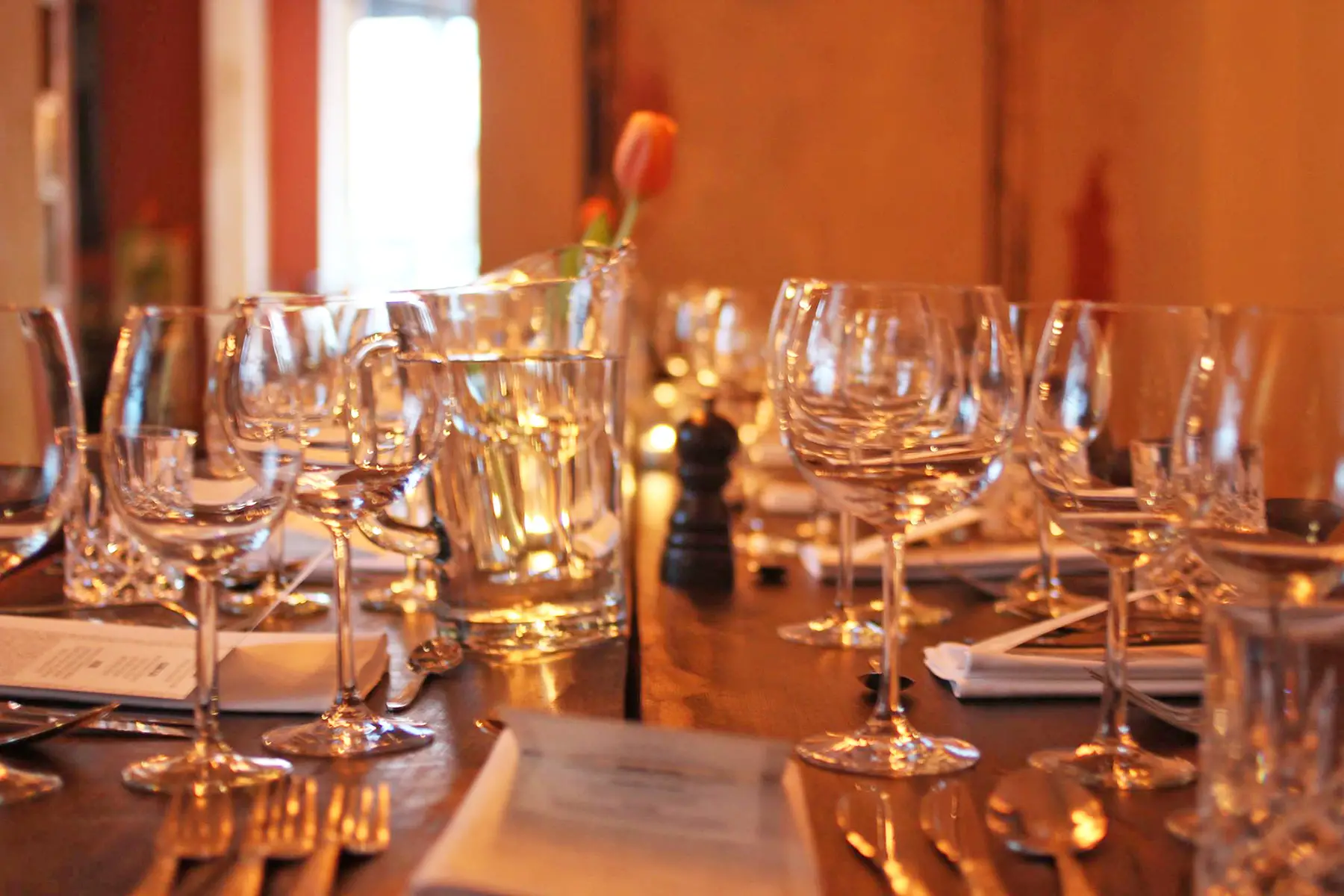
Once inside, dinner guests can sample unique cuisine in a totally unique setting. Here, top chefs serve up multiple-course gourmet meals in the comfort of their own homes. Diners typically sit together at one table, allowing them to meet new people and learn about the dishes firsthand. Some of the most famous supper clubs in Berlin include Daniel’s Eatery, Thyme Supperclub, and Muse; a supper-club-turned-restaurant that regularly hosts guest chefs and various events. So if you fancy something a little different from your dining experience, why not get it on the secret and venture underground.
10. Take an underground tour of Berlin
If you’ve seen all the sites Berlin has to offer, then why not delve beneath the surface of the city and enjoy a totally different perspective. Leading the way in alternative city tours, the non-profit Berliner Unterwelten society offers fascinating guided tours into Berlin’s extensive network of subterranean architecture. Since 1997, the society has been working to open up Berlin’s hidden spaces and structures to the public. Today, it offers several different tours that take visitors beneath famous landmarks and sites. These include the Berlin Wall and Volkspark Humboldthain.
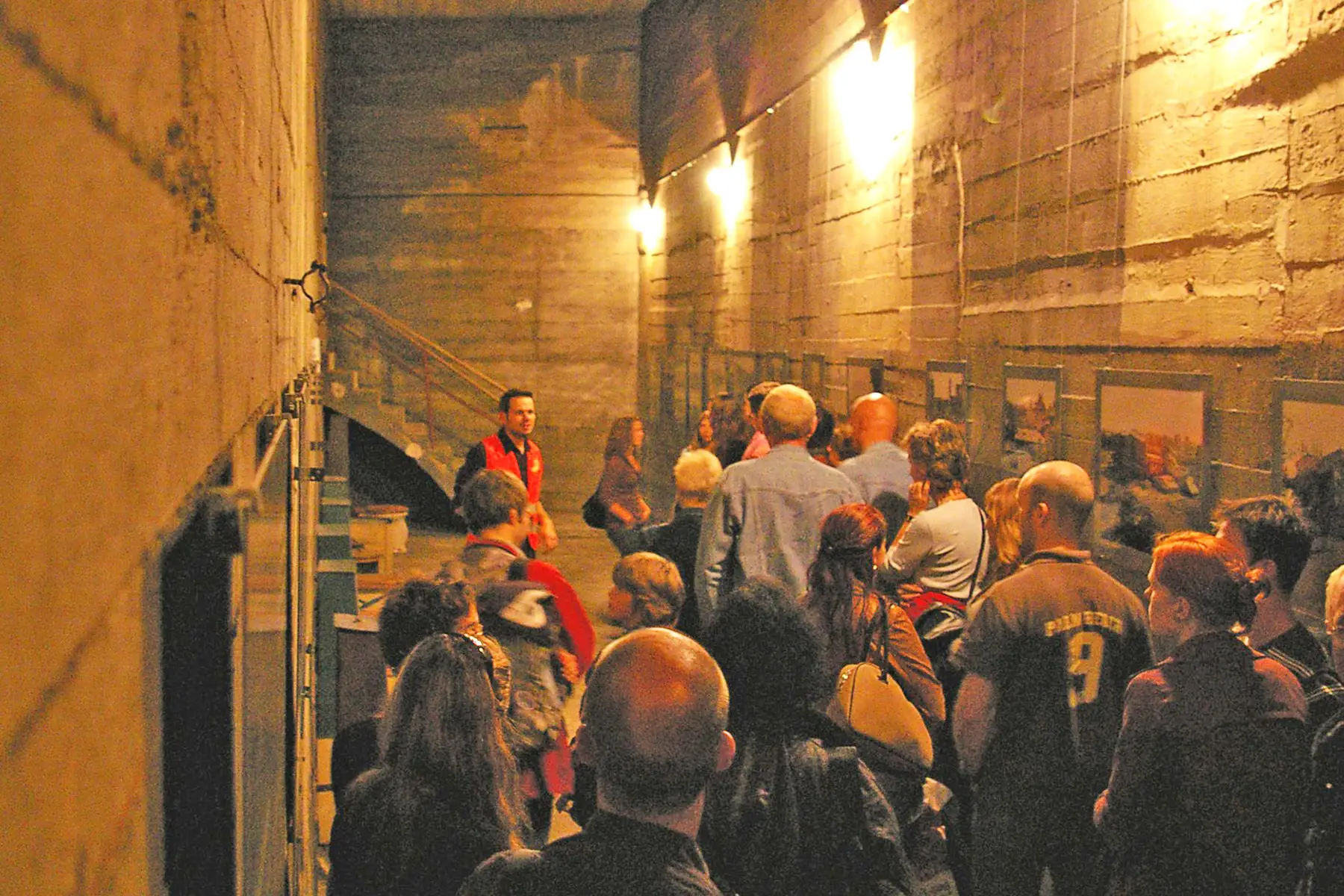
Titled ‘Dark Worlds’, the main tour takes place within the Gesundbrunnen underground train station. This consists of a myriad of civilian shelters and bunker complexes that were used during the bombing campaigns in Berlin. Remarkably, these have remained untouched since the Berlin Wall was built in 1961. Therefore, those visiting them can gain a glimpse into the harrowing reality of what life was like in Germany’s capital during this time. As you venture deeper underground, a tour guide will also explain the history behind the various sites that you come across. Needless to say, this unique experience will leave you wondering what other worlds are sitting quietly beneath your feet.
